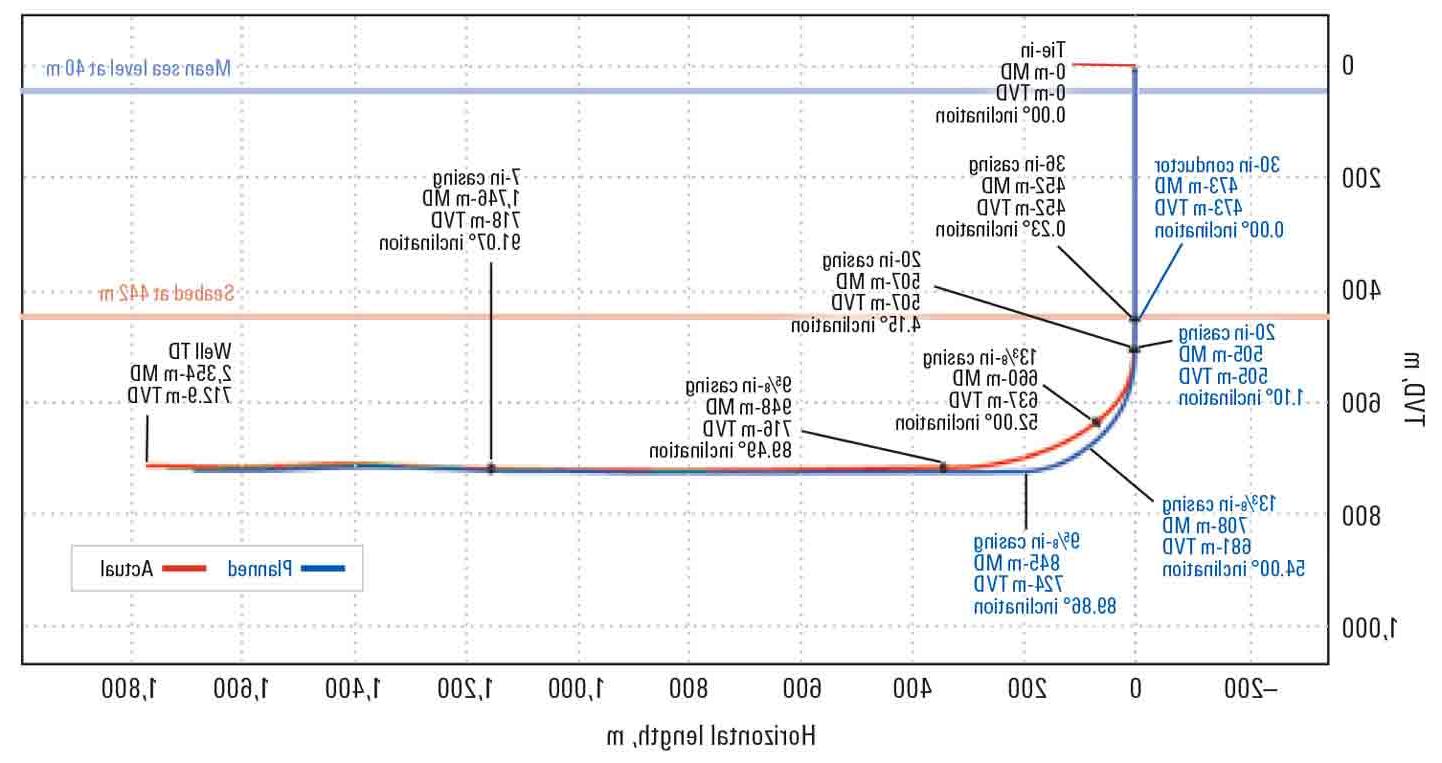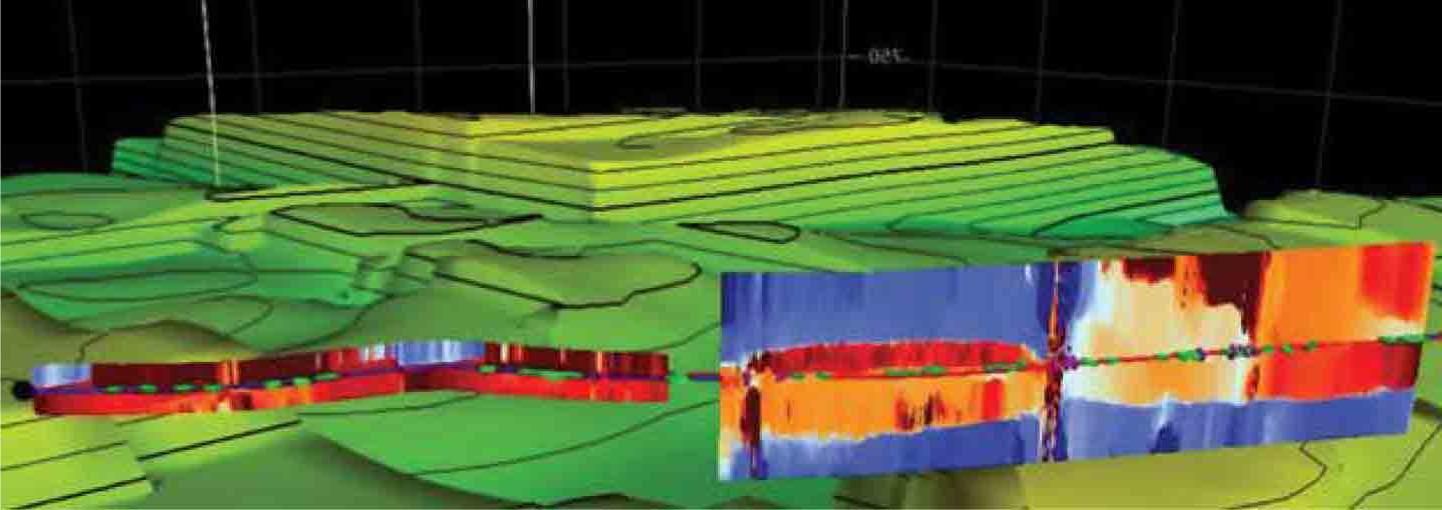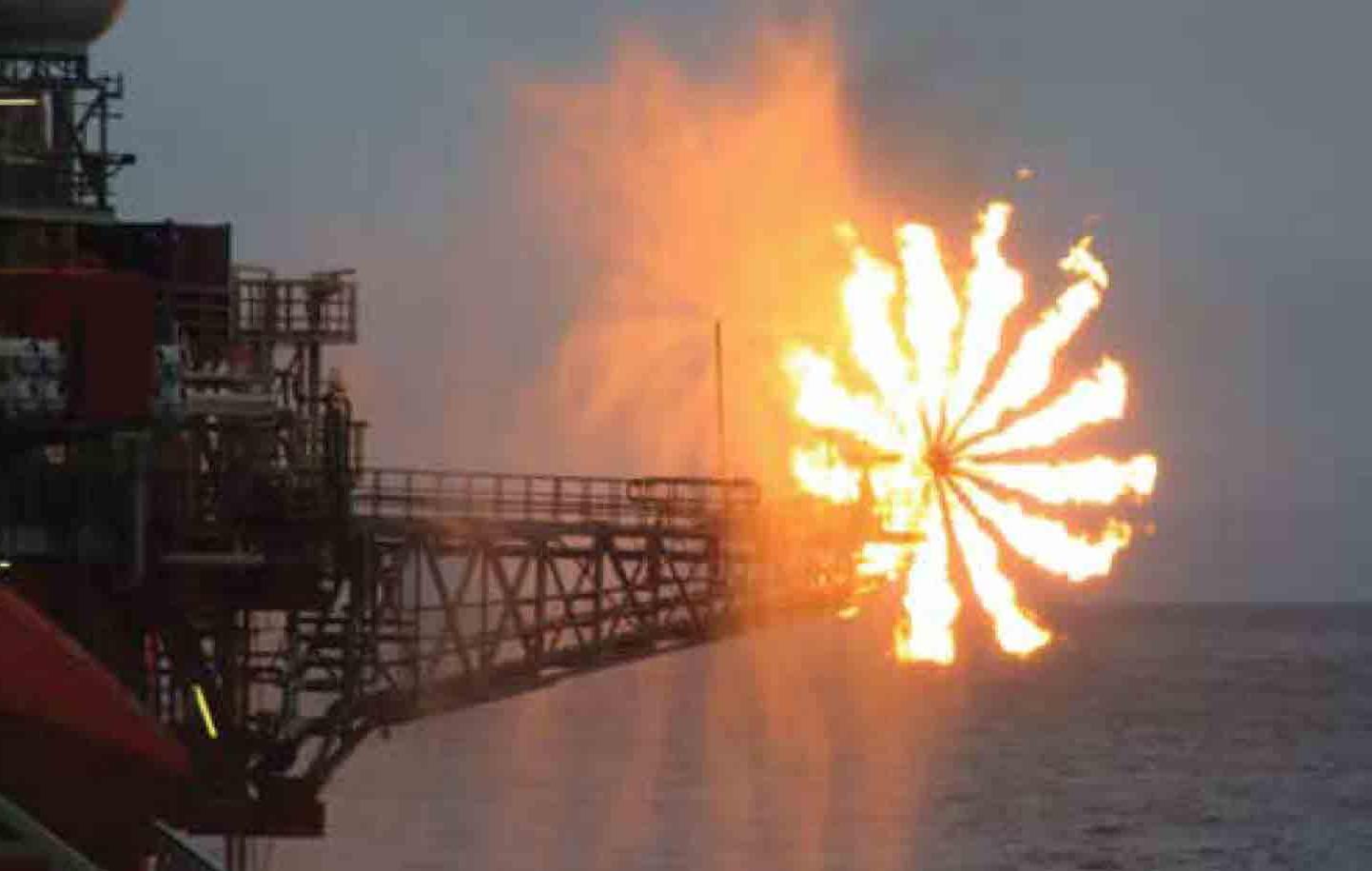Vx Spectra
Surface multiphase flowmeter
Accurately measure the full spectrum of multiphase flow rates while monitoring production in real time.
Published: 08/19/2017

Published: 08/19/2017

OMV Norway was planning an appraisal well in the Wisting Field, located in the Arctic region at 73° north latitude in the Barents Sea. The field contained a few vertical wells—a discovery well and subsequent exploration wells.
OMV's well plan included an exploration target in the build section before starting a long horizontal section to intersect a sandstone reservoir. The well's landing was planned below approximately 400 m [1,312 ft] of water and just 250 m [820 ft] below the seabed. The curve would be drilled to 55° inclination in a 12 1/4-in pilot section, which would be opened to 17 1/2 in with a dedicated run before landing the section TD. The horizontal section was to extend for 1,400 m [4,593 ft]. The shallowness of the reservoir eliminated the possibility of a tangent section, and mud motor BHAs would land the well with 100% sliding. Challenges included the high dogleg requirement, torque and drag monitoring, and ECD management while ensuring high-quality hole cleaning.
The well test would encompass 461 m [1,513 ft] of perforations to evaluate the resources in a fault block. Other fault blocks in the reservoir would be passed and drilled through, and pressure points would be measured and formation evaluation performed. The test was of particularly high focus because horizontal well testing is not common in the industry, and horizontal profiles increase test complexity. The operation was planned for the winter and needed to be performed within stringent environmental regulations.
OMV called on Schlumberger to lead the service delivery. The two companies collaborated on a customized, integrated approach that included multiple teams, domains, and disciplines.

Nine months before spud, Schlumberger began an integrated well engineering phase to outline the challenges inherent to shallow horizontal drilling, including ECD, hole cleaning, torque, and drag. The Petrel E&P software platform was used to build a 3D geomechanics study that supported decisions on mud weight, mud characteristics, cement properties, and drilling BHA and drillstem testing (DST) design and parameters. The results of the integrated well engineering collaboration helped assess well design scenarios and determine plans of action for mitigating risk if unexpected events occurred.
Schlumberger deployed a surface logging suite as well as a dedicated drilling analyst, who worked in tandem with the in-house real-time geomechanics engineer and well placement specialist and the OMV drilling and subsurface teams. Together, the team monitored, interpreted, and forecast the well status using real-time data displays, enabling OMV to make informed decisions. Additionally, a dedicated logistics coordinator was deployed on the project to mitigate risk and avoid NPT spent on waiting for equipment or products to arrive on site.
The DBOS drillbit optimization system, Techlog wellbore software platform, and Drilling Office integrated drilling software were used to analyze offset wells, define formation strength and expected drilling parameters, and simulate BHA build tendencies. Results indicated that 12°/30 m to 13°/30 m was feasible in the expected formation lithology with a sliding BHA.
Opening the section to 17 1/2 in at 9.5°/30 m involved high perceived risks, including accidental sidetracking, tool fatigue, and tool failure. Mitigating these risks required careful evaluation. After performing hundreds of simulations with the i-DRILL integrated dynamic system analysis service, Schlumberger determined that combining a staged hole opener with a straight mud motor was the most stable hole opening strategy and would help manage string stress.
The drilling BHAs included a suite of drilling and measurements technologies that would enable precise geosteering and well landing:
M-I SWACO, a Schlumberger company, recommended running the STARGLIDE ROP-enhancing lubricant in the 6-in section for improved wellbore integrity, enhanced rheology, and reduced torque in the tight mud-weight window and low reservoir and surface temperatures. The fluid was also engineered to facilitate building angle and to reduce friction while drilling with the sliding motor at shallow depths. Formation fractures and losses in the horizontal sand section were mitigated by changing the fluid from oil-based to water-based mud, which was supplied in large volumes from the M-I SWACO facility in Hammerfest, Norway. Simulations in the VIRTUAL HYDRAULICS drilling fluid simulation software enabled accurate ECD and hole cleaning data throughout the operation. Additionally, the compact ENVIROUNIT offshore slop water treatment system was deployed to ensure adherence to environmental regulations.
Schlumberger wireline technologies helped OMV characterize a new block of the reservoir as well as its quality. The wireline run included high-inclination logging using the TLC tough logging conditions system as well as the Optiq Seismic fiber-optic borehole seismic solution, which acquires a vertical seismic profile via a fiber optic cable. Enabled by wireline conveyance, the solution saved a run and approximately 8 hours of rig time.
The well test program was prepared using numerical reservoir simulation to achieve the well test objectives. GeoTesting geology-based well test design and interpretation services were used to perform a global sensitivity analysis (GSA), which helped evaluate the impact of geological uncertainties, quantified the confidence level on the achievable interpretation results before the test, and helped OMV optimize test duration.

The deployed DST string consisted of a production packer, downhole memory gauges, IRDV intelligent remote dual valve for downhole shut-in and reverse circulation functionality, a downhole PVT sample carrier enabling the collection of representative downhole PVT samples, and the OrientXact tubing-conveyed oriented perforating system.
The well test operations also required integrating an ESP with the DST string components. An ESP encapsulated in a pod section was installed in the riser above the SenTREE 3 subsea test tree. Significant engineering work was undertaken to evaluate the impact of ESP vibration on the subsea BOP and the landing string. Prior to the well test, Schlumberger used the OLGA dynamic multiphase flow simulator to optimize and model cleanup operations with the ESP.
The surface well test spread included a new-generation production test separator equipped with Coriolis meters for effective fluid handling and separation, the Vx Spectra surface multiphase flowmeter for accurate flowrate measurements, and the EverGreen minimal environmental impact well effluent burner for efficient disposal in the environmentally sensitive Barents Sea. During the test, approximately 2,000 m3 [12,580 bbl] of oil was successfully burned without HSE incidents.
Following the well test, the same hydrodynamic model that was used for the GeoTesting services design was subsequently used to perform numerical well test interpretation. The reservoir model was calibrated with the well test response, reducing the uncertainty in the model with associated confidence levels on each of the reservoir parameters characterized.
Schlumberger provided the project management framework and was responsible for the overall project delivery. A project manager orchestrated the well design, planning, and operation with the goal of maximizing HSE performance, service quality, communication, and day-to-day team coordination.
All the equipment and materials were managed by the dedicated logistics coordinator, which eliminated NPT during the Schlumberger operation and optimized the total costs for OMV. When OMV chartered a freight aircraft from Kazakhstan to carry 30 tons of a contingency BHA and backup, Schlumberger gathered the required documentation set for flying the heptacombo, including the chemical nuclear source, in less than 24 hours.

Schlumberger helped expedite the well engineering stage from concept selection to planning,achieving in less than 12 months what can take years to accomplish. This efficiency saved OMV significant running costs.
The drilling BHAs achieved a dogleg slightly higher than 12°/30 m, close to the limit of the achievable range for sliding the DST string to TD per the detailed prejob simulations adjusted for the final well shape. Opening the hole to 17 1/2 in at 9°/30 m was performed with no accidental sidetrack or tool failure.
The STARGLIDE lubricant reduced torque by 20% in the 6-in section, and the drilling fluid maintained an excellent rheology profile in the winter conditions.
The GeoSphere service revealed that the reservoir was thicker but more heterogeneous than anticipated—useful information for geosteering and for postwell evaluation activity.
During operations, a storm required that the SenTREE 3 tree shut in the well, disconnect from the string, then reconnect to safely continue the well test operations. This operation was performed without issue with no negative effect on the string, rig, or environment.
The integrated Schlumberger solution helped OMV achieve its objectives—for the well test and the overall project.
Challenge: Deliver a shallow horizontal appraisal well in the Barents Sea within time and budget and without HSE issues.
Solution: Collaborate on, customize, and deploy a fully integrated system comprising specialized drilling, reservoir characterization, and well testing technologies.
Results: